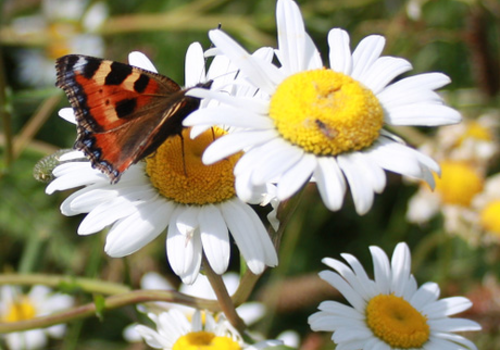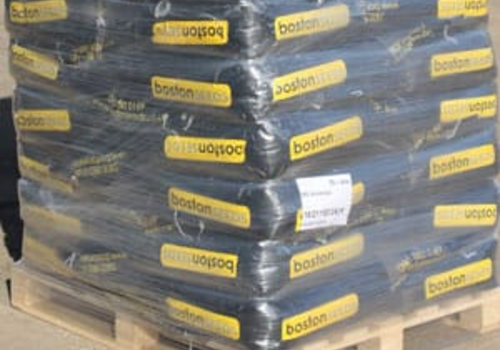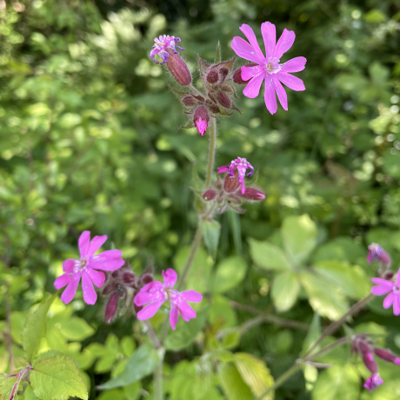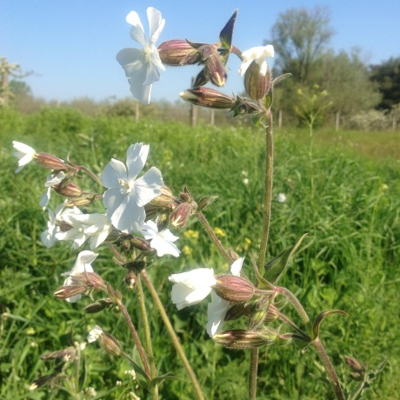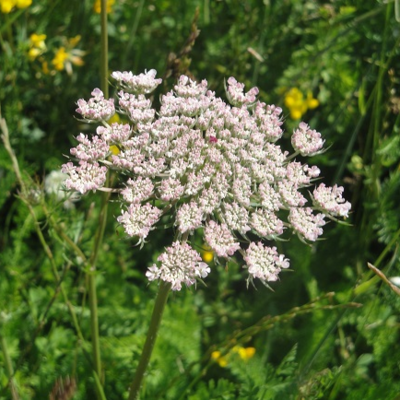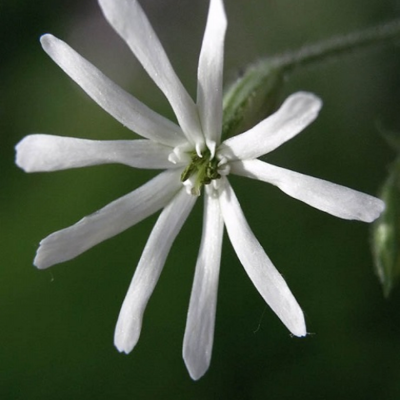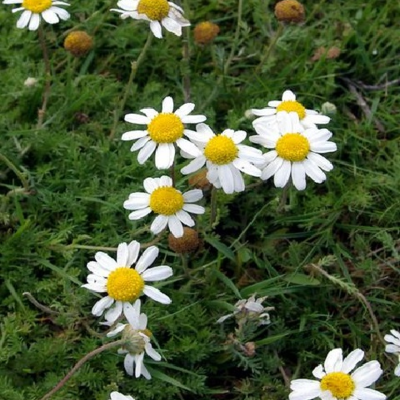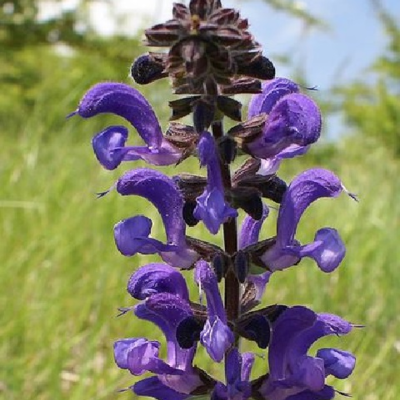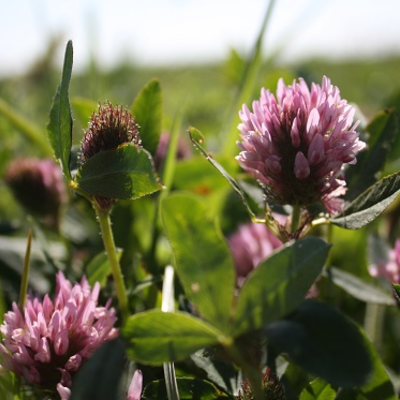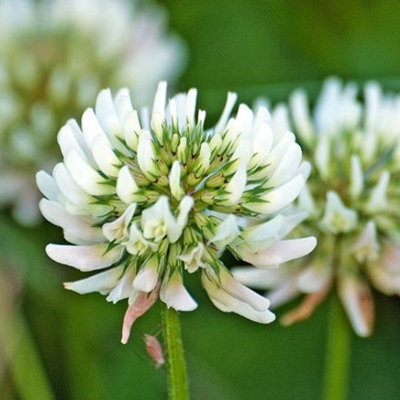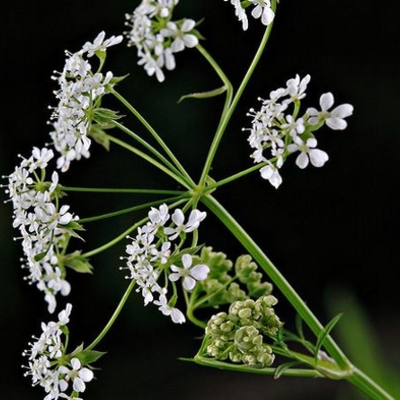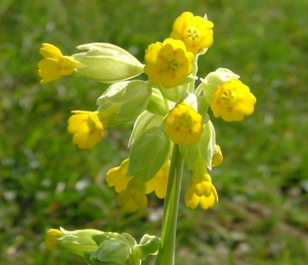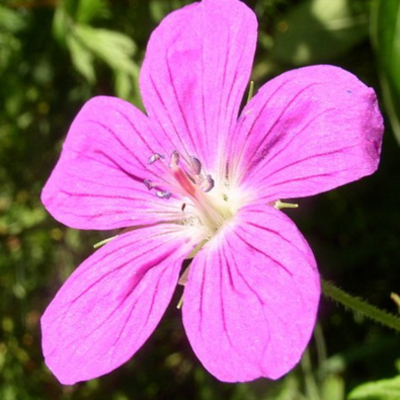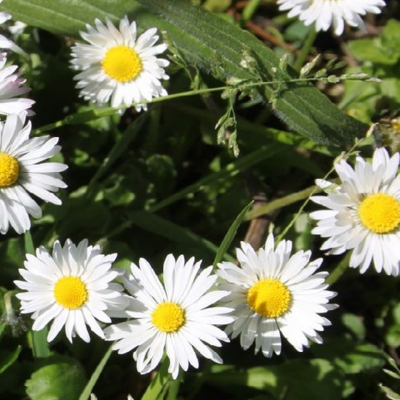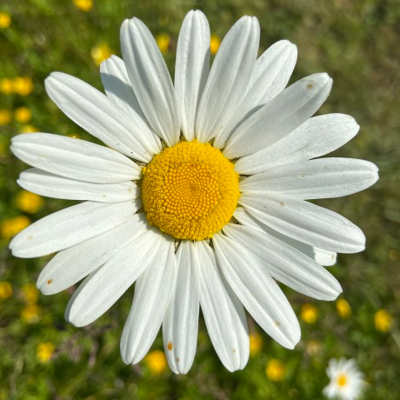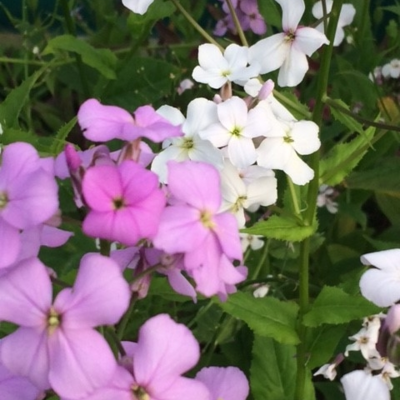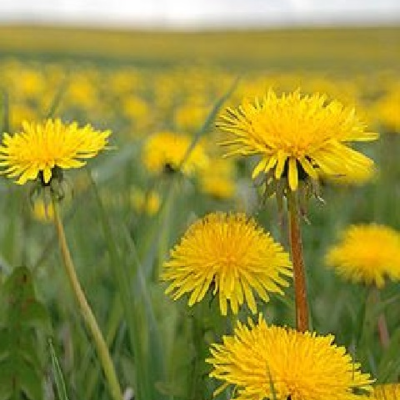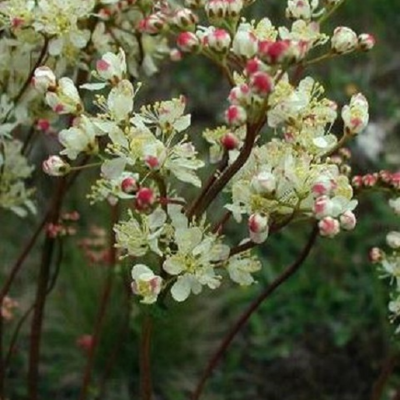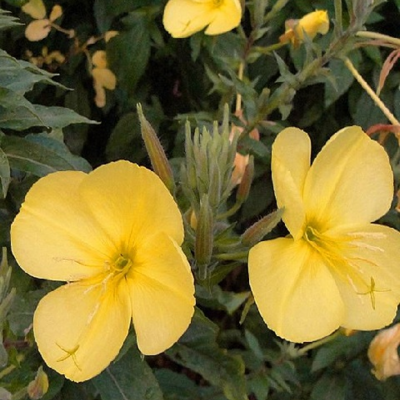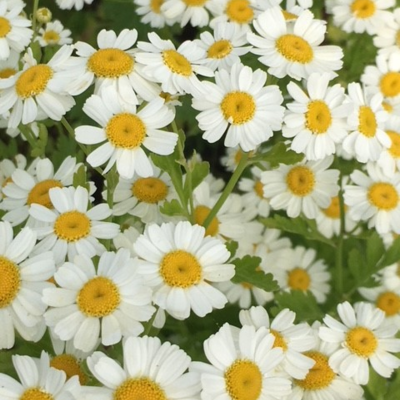Wildflower Plants A to Z
Choose from our entire range of over 100 wildflower plug plants, expertly grown in our very own nursery from high quality, UK native wildflower seed. Our wildflower plugs are ready to be planted straight out into your garden or meadow as soon as they arrive, all year round. Buying individual wildflower plants is one of the best ways to establish your chosen wildflower species, planted individually or as part of a more diverse meadow created from our range of wildflower seeds.
Don't hesitate to get in touch to speak to one of our experts or request a catalogue to view our full range. Ordering regularly or looking for large volumes? Click here to apply for a trade account today - we review all applications within one working day.

Plants for Pollinators highlights plants selected by the RHS as scientifically proven to tackle the declines in bees, butterflies and other pollinators.
In spite of its name, the Red Campion boasts eye-catching fuschia petals, though planted with White Campion, they may produce precious, pastel-pink hybrids. Regardless, they make a welcome splash of colour in a shady spot, and they’re highly attractive to bees!
- Type: Perennial
- Height: 30-60cm.
- Flowers: April-September
- Soil Requirement: Well-drained
- Light Requirement: Partial Shade
- Natural Habitat: Hedgerows, woodlands
- Also known as: Hare’s Eye, Ragged Jack, Adder’s Flower
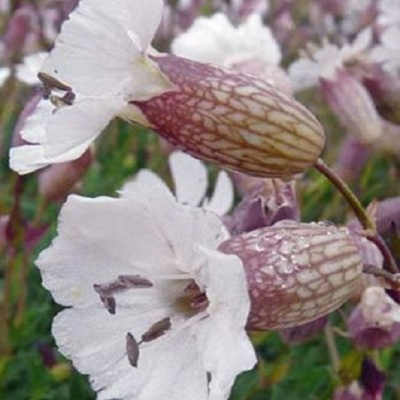

Plants for Pollinators highlights plants selected by the RHS as scientifically proven to tackle the declines in bees, butterflies and other pollinators.
A coastal campion. Grows a bladder-like calyx coloured in coral, ending in bubbly white flowers which look brilliant washing over a rockery like sea foam.
- Type: Perennial
- Height: 15–30cm.
- Flowers: June-August
- Soil Requirement: Well-drained, sandy
- Light Requirement: Full sun or partial shade
- Natural Habitat: Coastal areas, cliffs
- Also known as: Sea Pink, Seaside Catchfly

Plants for Pollinators highlights plants selected by the RHS as scientifically proven to tackle the declines in bees, butterflies and other pollinators.
This pristine white, five petalled perennial is also well known for producing a clovey scent at dusk, not only making it perfect for pollinators, but also making for a lovely plant indoors.
- Type: Perennial
- Height: 30-60cm.
- Flowers: May-October
- Soil Requirement: Well-drained
- Light Requirement: Partial Shade
- Natural Habitat: Roadside verges, hedgerows
- Also known as: Bull Rattle, White Cockle, White Robin

Plants for Pollinators highlights plants selected by the RHS as scientifically proven to tackle the declines in bees, butterflies and other pollinators.
This well-known umbellifer is simple in its beauty, but generous, producing pleasing feathered foliage as well as fountains of foamy white florets, often with a dark red central flower. They're surprisingly eye-catching, making a bold statement in a wild meadow!
- Type: Biennial
- Height: 30-40cm
- Flowers: June-October
- Soil Requirement: Well-drained
- Light Requirement: Full sun
- Natural Habitat: Cliff sides, grasslands, roadsides
- Also known as: Queen Anne’s Lace
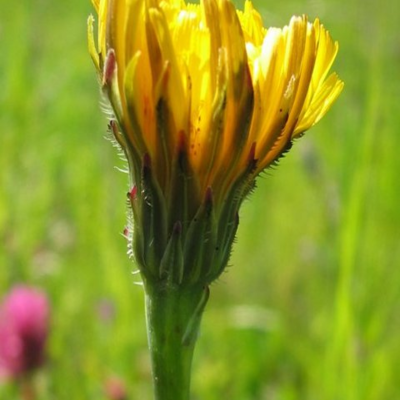

Plants for Pollinators highlights plants selected by the RHS as scientifically proven to tackle the declines in bees, butterflies and other pollinators.
The Common Cat's-Ear is a must-have for meadows, providing a scattering of sunny yellow blooms which return year after year, all while attracting pollinators and being relatively easy to take care of- they simply are the cat's pajamas!
- Type: Perennial
- Height: 30-45cm.
- Flowers: May-September
- Soil Requirement: Well-drained
- Light Requirement: Full sun or part shade
- Natural Habitat: Roadsides, grasslands
- Also known as: Flatweed, False Dandelion
This spindly-white snowflake of a flower have a dainty beauty to them, especially on their pink-tinted, drooping stalks. They’re night-scented flowers, which means that they’re ideal for pollinators.
- Type: Perennial
- Height: 25–60cm.
- Flowers: May-July
- Soil Requirement: Well-drained, dry
- Light Requirement: Full sun
- Natural Habitat: Coastal areas, cliffs, grasslands
- Also known as: Sea Pink, Seaside Catchfly
An amazingly aromatic alternative to common grass or daisy lawns, this low-growing, daisy-like flowers make for a pleasing ground cover that is easy to maintain once established, but sensitive to trampling. Plant plugs in full sunlight at least 10cm apart.
- Type: Annual
- Height: 10–20cm.
- Flowers: June-August
- Soil Requirement: Well-drained
- Light Requirement: Full sun
- Natural Habitat: Lawns, grasslands
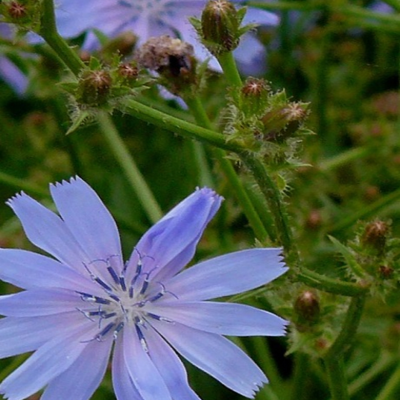

Plants for Pollinators highlights plants selected by the RHS as scientifically proven to tackle the declines in bees, butterflies and other pollinators.
The Chicory is a perfect mix of energetic colour and grace, producing feathery, sky blue petals on thin, branching stems. In addition to making a creative climber, the Chicory’s roots have also seen a wide range of culinary uses, especially as an alternative to coffee - but we think the beauty of its bold blooms are enough of a boost!
- Type: Perennial
- Height: 30–90cm.
- Flowers: June-October
- Soil Requirement: Well-drained
- Light Requirement: Full sun
- Natural Habitat: Fields, road verges
- Also known as: Blue Dandelion, French Endive, Succory
Imagine a midsummer meadow rife with the Meadow Clary’s tall-growing spikes of striking indigo flowers! Though they’re now a rare sight in the wild, this handsome and hardy clump-growing plant is a sight to behold, on its own or at the back of a border. Noted for its soft foliage, which is aromatic when crushed.
- Type: Perennial
- Height: 80–100cm.
- Flowers: May-August
- Soil Requirement: Well-drained
- Light Requirement: Full sun
- Natural Habitat: Dry grassland, hay meadows, grassy paths
- Also known as: Meadow Sage
Clover plants are an essential and easy-to-grow part of a spring meadow, yet the unique beauty of their spiky, carmine red flower heads and namesake trefoil leaves are often overlooked. Scatter them in a lawn or a flower bed for a vibrant accent to other plants.
- Type: Perennial
- Height: 10-20cm.
- Flowers: May-September
- Soil Requirement: Well-drained
- Light Requirement: Full sun
- Natural Habitat: Grasslands, roadsides
- Also known as: Beebread, Cow Clover
A hardy, creeping lawn flower best known for its 3-lobed leaves, but its pom-poms of tinted white petals make for an excellent lawn flower, and carry the faint smell of honey. Easy to grow in any environment.
- Type: Perennial
- Height: 10-20cm.
- Flowers: May-September
- Soil Requirement: Well-drained
- Light Requirement: Full sun
- Natural Habitat: Grasslands, roadsides
- Also known as: Dutch Clover, Ladino Clover
Pure-white, delicate flowers standing proud on long feathered stems commonly found in roadsides and meadows. These umbrella-like clusters grow rapidly in the warm summer months and are home to an abundant supply of bees and pollinators.
- Type: Perennial
- Height: 60-90cm
- Flowers: May-June
- Soil requirement: Neutral, well-drained
- Light requirement: Full sun to semi-shade
- Natural habitat: Grassland, meadows, hedgerows and woodlands
- Also known as: Queen Anne's Lace, Wild Chervil, Wild Beaked Parsley, Keck

Plants for Pollinators highlights plants selected by the RHS as scientifically proven to tackle the declines in bees, butterflies and other pollinators.
Cowslip plants form clusters of bell-shaped, sunny yellow flowers with distinct tubed calyxes. Known for having a sweet and strong scent compared to apricots, and it has a history in folklore, with uses in weddings and other festivities. An easy-to-grow Easter-time treat!
- Type: Perennial
- Height: 15–30cm.
- Flowers: April-May
- Soil Requirement: Moist but well-drained
- Light Requirement: Full sun or partial shade
- Natural Habitat: Meadows, woodlands, road verges
- Also known as: Fairy Cup, Key Flower, Luck Flower, Paggles
Hedge Cranesbill is a sublime, showy species of wildflower, its lobed petals a perfect palette of glowing pink and mellow purple, often with darker-coloured veins. This fuchsia firework of a flower is long-flowering and hardy, meaning it’ll grace your garden for a long time.
- Type: Perennial
- Height: 20–45cm.
- Flowers: April-May
- Soil Requirement: Well-drained
- Light Requirement: Partial shade
- Natural Habitat: Meadows, woodlands, road verges
- Also known as: Hedgerow Cranesbill, Mountain Cranesbill
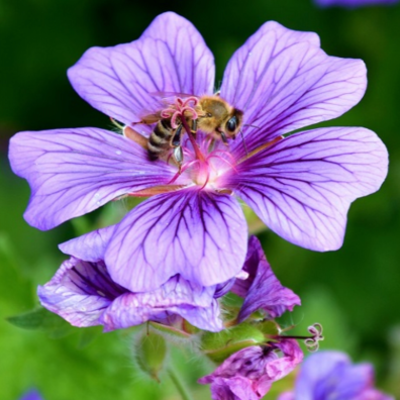

Plants for Pollinators highlights plants selected by the RHS as scientifically proven to tackle the declines in bees, butterflies and other pollinators.
The Meadow Cranesbill gets its name from its attractive, beak-like seed pods, but no bird could match the beauty of this flower's veined violet petals mixed with blue growing in pairs on tall, forked stems. Easy to naturalise and attractive to bees and butterflies, the sky's the limit with this wildflower!
- Type: Perennial
- Height: 60-100cm.
- Flowers: June-September
- Soil Requirement: Well-drained
- Light Requirement: Full sun or partial shade
- Natural Habitat: Meadows, road verges
- Also known as: Crowfoot, Meadow Geranium
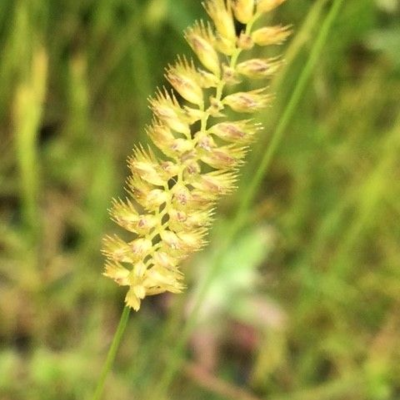

Plants for Pollinators highlights plants selected by the RHS as scientifically proven to tackle the declines in bees, butterflies and other pollinators.
Although its clustered spikelets trimmed with miniature magenta florets are now grown more as an ornamental plant, Crested Dogstail was once grown to be used to make bonnets. An important food plant for multiple species of butterflies, and works wonderfully in a wildmeadow mix, as it's exceptionally hardy- able to survive drought and cold and remain green throughout winter.
- Type: Perennial
- Height: 30–75cm.
- Flowers: May-June
- Soil Requirement: Moist but well-drained
- Light Requirement: Full sun or partial shade
- Natural Habitat: Meadows, grasslands
- Also known as: Dog's Grass, Dog's Tail Grass, Windlestraw

Plants for Pollinators highlights plants selected by the RHS as scientifically proven to tackle the declines in bees, butterflies and other pollinators.
Appearance-wise, the Common Daisy’s nothing crazy, with a ruffle of thin white petals, sometimes tinged pink, framing a central crown of tiny yellow florets. But love it or love it not, this famous flora is certainly robust, hardy and long-flowering, meaning its classic, cheery charm will shine in a lawn, bed or meadow for quite some time.
- Type: Perennial
- Height: 5–10cm.
- Flowers: All year
- Soil Requirement: Moist or well-drained
- Light Requirement: Full sun or partial shade
- Natural Habitat: Meadows, woodlands, road verges
- Also known as: Bone Flower, Goose Flower, Luckin Gowan

Plants for Pollinators highlights plants selected by the RHS as scientifically proven to tackle the declines in bees, butterflies and other pollinators.
Though it shares the same narrow, pearly white petals radiating from central sunny yellow florets, the Ox-Eye Daisy is much larger than the typical lawn daisy, with flower heads growing up to 5cm wide. A robust flower with classic charm, and perfect for pollinators to boot.
- Type: Perennial
- Height: 30-60cm.
- Flowers: May-August
- Soil Requirement: Well-drained
- Light Requirement: Full sun
- Natural Habitat: Meadows, road verges
- Also known as: Marguerite, Pretty Maids, Dog Daisy
With its clusters of uniquely vivid lilac petals with bursts of white, the Dames-Violet seems very different to her fellow violets, but bears the same sweet fragrance, which grows stronger in the evenings! A favourite of pollinators, and the dried petals can also be used for potpurri.
- Type: Perennial
- Height: 60-90cm
- Flowers: May-August
- Soil requirement: Moist but well-drained
- Light requirement: Full sun or partial shade
- Natural habitat: Hedgerows, wood edges, wasteground
- Also known as: Damask, Queen's Gilliflower, Sweet Rocket,

Plants for Pollinators highlights plants selected by the RHS as scientifically proven to tackle the declines in bees, butterflies and other pollinators.
This well-known wildflower provides proudly blazing bursts of golden petals in springtime landscapes! Hardy, easy-to-grow and wonderful for attracting pollinators, the dandelion's beauty is certainly something to sink your teeth into - in fact, its name originates from “lion’s tooth,” referring to their deeply serrated leaves.
- Type: Perennial
- Height: 10-45cm.
- Flowers: April-May
- Soil Requirement: Well-drained
- Light Requirement: Full sun or partial shade
- Natural Habitat: Meadows, road verges, fields
- Also known as: Bitterwort, Clock Flower, Lion’s Tooth

Plants for Pollinators highlights plants selected by the RHS as scientifically proven to tackle the declines in bees, butterflies and other pollinators.
Everything about this plant appears as soft and sweet as its common nickname, ‘Meadowsweet’: from its long, wispy branches of foaming, peachy-pink and creamy white flowers, down to its strong, sweet aroma. Plant in heavier, loamy soil- perhaps pairing it with other pastel plants for a real display of eye candy!
- Type: Perennial
- Height: 60-90cm
- Flowers: May-August
- Soil Requirement: Moist but well-drained
- Light Requirement: Full sun or partial shade
- Natural Habitat: Woodland verges, roadside verges, damp meadows
- Also known as: Lady’s Belt, Little Queen, Meadowsweet
The Evening Primrose is an easy-to-grow, tall-growing plant that really screams summertime style: its bell-shaped blooms grow in striking shades of yellow, pink and white, and produce a fetching fragrance. As its name suggests, it blooms late in the day, and but seeing the Evening Primrose's floral goblets glowing in the summer sunset is surely a sight to behold.
- Type: Biennial
- Height: 100-150cm.
- Flowers: June-October
- Soil Requirement: Well-drained, sandy
- Light Requirement: Full sun or partial shade
- Natural Habitat: Roadside verges, meadows
- Also known as: Cure-All, Four O’Clock, German Rambion
Here’s a real treat for you: the Feverfew is a small, bushy plant which grows daisy-like flower heads. Its small-but-dense size makes it a perfect potted plant, and though it likes being under the weather in plentiful sunlight, one may try to raise it indoors to best appreciate its strong scent. Highly valued for medicinal uses.
- Type: Perennial
- Height: 15–45cm.
- Flowers: July-September
- Soil Requirement: Well-drained
- Light Requirement: Full sun
- Natural Habitat: Waste lands
- Also known as: Featherfew, Pale Maids
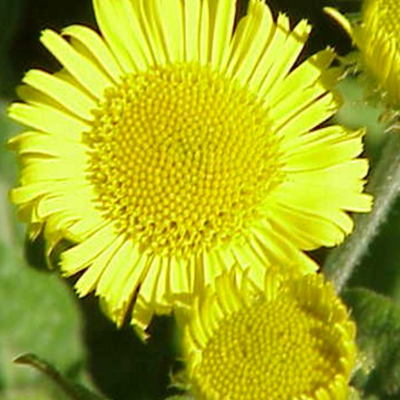

Plants for Pollinators highlights plants selected by the RHS as scientifically proven to tackle the declines in bees, butterflies and other pollinators.
If you're itching for a good pond-side plant, this may be what you need: these branches of bold yellow, daisy-like florets with ray-like petals are the most effective way to place some sunshine in a shady spot, but also has use in repelling invasive insects with its unique scent.
- Type: Perennial
- Height: 30-60cm.
- Flowers: July-September
- Soil Requirement: Moist
- Light Requirement: Full sun or partial shade
- Natural Habitat: Riversides, marshes, ditches
- Also known as: Harvest Flower, Job’s Tears, Pig-Daisy
Choosing different wildflower plants by species gives you complete control over when you plant them, where you plant them and what the end result will be. And buying wildflower plug plants instead of seeds, means that you don't have to wait for them to germinate - perfect if speed is of the essence!
The full range of over 100 British wildflower plants species from Boston Seeds is available to buy online in trays of 25, 150 and 500 plug plants and all are available with nationwide delivery.
Want to learn more about the likes and dislikes of your favourite wildflower plants? Our handy wildflower species quide will tell you all you need to know - yours to download and keep for FREE.
Buy With Confidence

